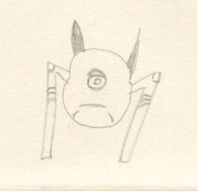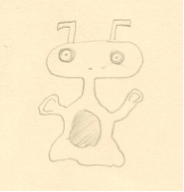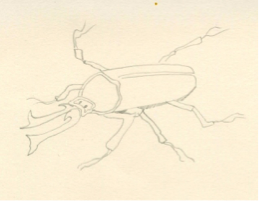Anne Valente & Josh Finnell
From The Journal Of Common Human Viruses
V. Astralopia

An infection of the eye, astralopia manifests in keen sight for the
duration of the infection, the ability to see every organism as an
aggregate of celestial matter. Other beings – caterpillars, housecats,
children, lovers – appear as constellations of stars, a luminous mass of
the dust that made them.
CAUSES
Risk factors for astralopia include the belief in cosmology, astrology, the divination of tarot cards. Those most susceptible are those who sat in outfields as children picking clovers rather than fielding; those who touched tadpoles within creekbeds and willed their source to move through water; those who gaze at the skin of their lover’s hands and imagine that for once the world is translucent, that the workings of veins and cells have revealed their origins at last.
SYMPTOMS
- A sudden capacity to stare at the sun, to for once bear its light and heat
- A fracturing of all living things into starbursted atoms, as if one were gazing at the world through a kaleidoscope
- An ability to see the world bent into refracted starlight, a pinwheel of bonds, small strands like lit seaweed; an ability to see the atomic structure of love
TREATMENT
Though astralopia often dissipates from the body of its own accord, an infection running its course, many sufferers report that they mourn the loss of the virus once it has passed from the cells of their bloodstream. They mourn light. They mourn the ability, for once, to see. They mourn the brief glimpse of what beams they saw stretched between humans, gossamer threads like the lines that connect constellations.
VI. Telomeraise

Telomeraise, a virus linked to human DNA, manifests as a slow creep of
sorrow across time as the body’s genetic code gradually unravels. Affects
the body most acutely when the afflicted gazes upon a loved one and
imagines without wanting an inevitable disintegration.
CAUSES
One of the most common human illnesses, telomeraise is the least discussed. Enters the body through the tear duct, through flood or the mere sting of grief. Infects humans in the quiet of their bedrooms when waking, behind sunglasses as they burn a sunset to memory, in the silence of the shower as they pick up dropped soap, as they see the lack of infinity etched in the lines of their hands.
SYMPTOMS
- An impetus of tears in dark theaters, in the sealed capsule of cars, when a song hits a wall of sound
- An impetus to grab other human beings and fasten them hard to one’s chest
- An impetus to obsessive compulsion: retracing steps, washing hands, whispering names as prayers, small resonances that calm the bloodstream and push the body to breaking
TREATMENT
As an illness, telomeraise is still without cure. As such, it is taboo, a virus rarely discussed. Treatment can include baths. Candles. Meditation. Religion. Treatment can include giving into the virus, of splitting oneself apart, of, for once, crying openly.
VII. The Marepox

The marepox is a human virus that affects the human body in
summer, most often between the months of June and August, when
humans are most likely to venture to the sea. Infects most acutely
when humans stand upon the shore and gaze toward the horizon,
beyond the waves. Seizes upon what is fluid within the body,
infecting the afflicted with the reminder that he or she is 80 percent
water, that he or she was once the ocean.
CAUSES
Humans are most susceptible to the marepox in the summer months, on days that exceed 80 degrees Fahrenheit, though cases have also been known to occur year-round. The marepox seeps into the bloodstream from granules of sand along the coast. As humans stand upon the shore, the marepox enters the body through the pores of human skin, gravitating toward salt and water. The virus takes effect immediately, before one can move away from the waterfront.
SYMPTOMS
- A sense of melancholy when the sun sets upon the water, as though one is seeing the water from the wrong side
- Experience of deja vu, of returning; certain that one possesses a phantom limb
- Nausea, often described as seasickness
- A vague yearning for water, a return to the womb
TREATMENT
Lying upon a waterbed. Taking a bath. Swimming in the ocean. Gargling with salt water. The marepox often leaks back into the water once the body approaches or submerges itself in fluid. The virus’s afteraffects can remain for days, as if one has just stepped from a boat, the subtle sensation of rocking upon waves.
VIII. Aspeaksia

Aspeaksia, an airborne virus that ails the throat, is regularly
transmitted from human to human. The virus invades the body
slowly, culminating in the inability to speak words of love. The
sufferer may feel their body bursting with emotion, but unable to
speak it. Effects can be longstanding, the virus dormant in the
bloodstream for a lifetime.
CAUSES
Those most susceptible to aspeaksia are those who dream in color. They may awake without language for what palette they have seen, no words to encapsulate passion or devotion. As a result, humans whose hearts are crushed by love are particularly susceptible. They have no lexicon for what radiance they feel. As aspeaksia infects their larynx, they may increasingly experience a disconnect between what is inside of them and what must come out, a wall that hardens the more they try to speak.
SYMPTOMS
- Drymouth; cotton breath
- Burning sensation that the eyes are screaming
- Tendency to press one’s hands against a lover’s skin, a hallucination borne of illness that words can walk through the walls of membranes
TREATMENT
Killing the lights. Lying upon a bed. Curling one’s body around the beloved’s body. Burying one’s face in the skin or hair of another human being and whispering hello, the quietest of beginnings. In this quiet space, the virus feels at home. In this space, if the sufferer is lucky, the virus can be coaxed from the throat, a cork that if pulled will release a flood.
IX. Edifictitus

Edifictitus, a common virus that infects the human brain, causes the
afflicted to imagine that he or she is walking constantly through the
architecture of past homes. Manifests in the sufferers’ elaborate
mapping of childhood bedrooms, the kitchens of past lovers, the
hallways of childhood friends’ homes, certain that such rooms still
contain their laughter.
CAUSES
Powerful but harmless, edifictitus most readily enters the brain when the body is between sleep and waking, a state that arrests the passage of time. When fully awake, walking within the world, the sufferer imagines that what is tactile inside dreams lies within grasp, that the structure of memory is a house to inhabit.
SYMPTOMS
- Frequent mapping of former homes, walking room to room, dragging one’s hands across every bedspread and armchair
- The certainty that somewhere, beyond dreams, a doubled self still builds forts from blankets upon the carpet of one’s living room
- Closing one’s eyes to find oneself playing board games, ten again, in the basement of one’s childhood best friend; to find oneself at fifteen, sweat-soaked and face-flushed, in a first lover’s sheets; to find oneself walking barefoot across the backyard toward a small pool, arms ballooned in water wings
TREATMENT
Edifictitus is hardwired, parasitic, seizing upon what structure of memory the brain holds. The virus must run its course, an affliction of liminality, wherein the sufferer may not know across a span of days what space or time is true, real, occupied. The sufferer may not know, permanently, whether memory is an architecture of truth or a house of cards.
Anne Valente is the author of the forthcoming short story collection, By Light We Knew Our Names (Dzanc Books, 2014), and the fiction chapbook, An Elegy for Mathematics (Origami Zoo Press, 2013). Her fiction appears in Ninth Letter, Hayden’s Ferry Review, Redivider and Copper Nickel, and her non-fiction is forthcoming in The Believer. (www.annevalente.com)
Joshua Finnell is the humanities librarian at Denison University in Granville, Ohio. His work has appeared in Library Philosophy and Practice, Journal for the Study of Radicalism, and New Library World. (joshuafinnell.com)

